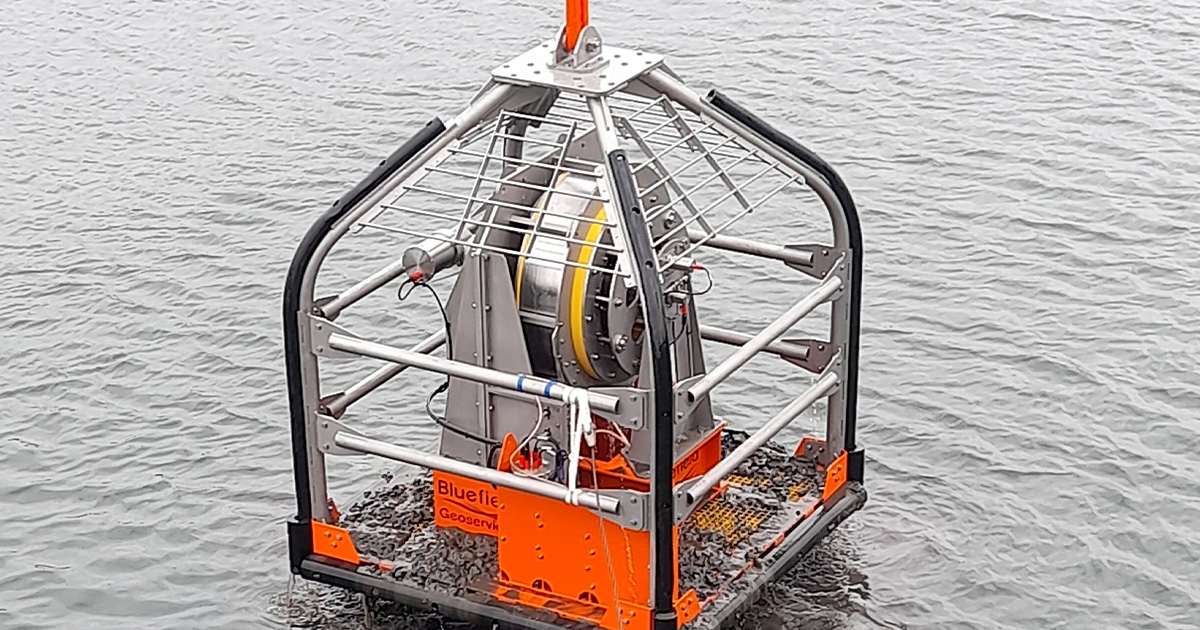The Definitive Toolkit to Redefine Geoscientific Frontiers

As nations grapple with their latest net zero ambitions, questions linger about the current rate of progress defining the fabled energy transition. What is clear, though, is that futureproofing the global energy mix will depend heavily on the safe and responsible exploration of offshore energy resources.
Not only does this mean prioritizing an increasingly sustainable approach to conventional offshore oil and gas E&P activities, but also seizing on new opportunities, such as those presented by relatively untapped renewable energy sources, in particular offshore wind.
Curbing CO2 emissions in the short-term context of any net zero target does not, in practicality, mean eliminating them. Rather, it places a growing emphasis on adjusting standard operating procedures to minimalize the carbon footprint of planned offshore development, which includes decommissioning works. It also calls for governments and industry to rally around relatively new tech-inspired routes to carbon neutrality, such as carbon capture and storage as a decarbonization tool.
All this, beyond a long-binding sense of partnership between public and private sectors, is contingent on unprecedented levels of capital investment in the build out and maintenance of ocean-based infrastructure. Some assets will tower above the waterline (massive nacelles, power substations, etc.) while others will remain out of sight (a network of seabed pipelines and submarine cabling), but all will be needed to plug offshore energy into the shore-based national grids. Some installations will require us to go deeper still, such as emerging carbon dioxide removal (CDR) proposals that advocate for the deep-sea storage of CO2 in either seafloor containment facilities or under the bedrock itself.
Notwithstanding the sociopolitical will and huge budgetary requirements needed to action change of this magnitude, there is another common denominator here that threads these ambitions: the availability of subsea geotechnical data.
Offshore assets are subject to far greater environmental lateral loads than their land-based counterparts, as well as unpredictable geohazards, so it is paramount for developers to study and scrutinize the seafloor characterization of target sites. This baseline understanding allows scientists to model how shifting environmental conditions and natural forces may accentuate an asset’s volatility.
RIGHT TOOLS FOR THE RIGHT DATA
This is why subsea geotechnical proficiency, within a multidisciplinary marine survey framework, is in such high demand right now. As nations look to harness new energy frontiers, acquiring the necessary data calls for two indispensable inputs: subsea geotechnical subject matter experts (SMEs) and the right tools for the job.
Successful seabed site investigation campaigns hinge on three fundamental aspects: first, the safe deployment of highly innovative and engineered systems to systematically collect sediment samples and other geospatial data; second, strict adherence to scientifically robust soil testing methods; and third, the scrutiny of seasoned in-field experts with proven experience of delivering complex projects worldwide.
These are the three pillars around which Bluefield Geoservices was founded in the UK back in 2018 when a select team of geoengineers set about disrupting the time-honored order of subsea geotechnical service providers. The mission, as true today as it was five years ago, remains to redefine the offshore industries’ geoscientific frontiers by developing and fielding best-in-class geotechnologies that deliver gold-standard geodata. In 2023, now with several locations established both in the UK and the US, we continue to invest in new ways to rewrite the offshore survey playbook.
The last five years have been busy, to say the least. Bluefield’s approach has always been project-specific, and this has given us the opportunity to develop and field, in collaboration with key customers and strategic partners, several highly customized and proprietary systems. Further, our third-party license agreements with other subsea tech developers, such as Aretellus, have positioned Bluefield as a unique ‘one-stop-shop’ for cost-effective subsea geotechnical survey packages.
RIGHT KIT, LOCATION, AND PRICE POINT
Our ability to respond to client needs quickly and with cost-effective proposals relies on us always having the right kit and the right personnel in the right location. With so much offshore energy expansion taking place on both sides of the Atlantic—especially in the North Sea and in waters off the US northeastern states—this means staying one step ahead of demand and allocating resources accordingly. To this end, in 2019, we opened an office in Providence, Rhode Island, to better serve US offshore wind interests, relocating both team members and equipment to ensure we are able to respond to a brief and mobilize rapidly.
This also coincided with the forging of several strategic alliances in the US to serve a broader range of customers operating in US waters, in particular in and around the Gulf of Mexico. In partnership with CSA Ocean Sciences, a renowned provider of marine environmental consultancy with a 50+ year track record of working with offshore energy, coastal infrastructure, and government customers across the globe, we opened an in Stuart, Florida, to better formulate our combined offering of complementary marine survey services supported by pioneering technologies.
Back in the UK, in 2023, we also opened a new state-of-the-art facility near the Port of Blyth to support growing demand for operators in the North Sea and position Bluefield Geoservices as a highly integrated and streamlined contracting solution for multidisciplinary survey, including geophysical, seafloor, and water column sampling services in both shallow and deep-water environments.
To find out more about Bluefield Geoservices: https://bluefieldgeo.com.
This story was originally featured in ON&T Magazine's October/November 2023 issue. Click here to read more.

